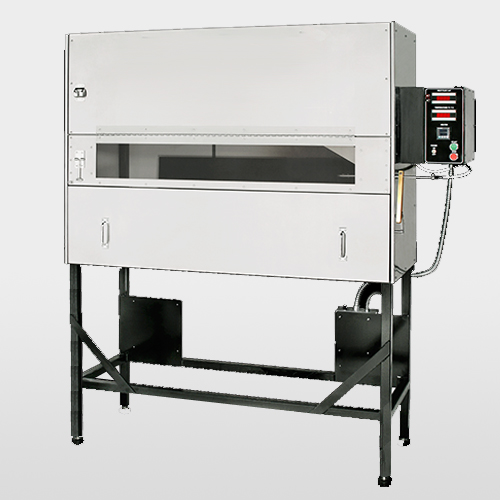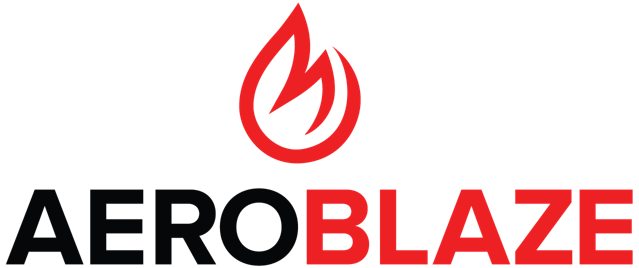Insulation Flame Propagation
Insulation Flame Propagation Test* (for aviation)
The Insulation Flame Propagation test (also referred to as the Radiant Panel test) is used to determine the flammability and flame propagation characteristics of thermal and acoustic insulation when exposed to both a radiant heat source and a flame. It is most commonly used to show compliance with 14 CFR 25.856(a).
Test Methods

*Tested at our partner lab
Test Summary
A test sample is placed horizontally into a chamber and exposed to both a radiant heat source and direct flame for 15 seconds. Flame time, burn length, and flame propagation are recorded. The pass/fail criteria are based on the flame time and burn length.
Test Sample Requirements
Test samples must meet the following requirements:
Regulatory Requirements
This test is typically used to show compliance with the following U.S. Federal Regulations:
Note 1: In the aviation industry, 14 CFR may also be referred to as "FAR" (Federal Aviation Regulations). You may see the requirements listed as FAR 23.856, FAR 25.856, etc.
Note 2: The European Union Aviation Safety Agency (EASA) uses similar Certification Specifications (CS) which correspond to those in the CFR. For example, the EASA regulations are listed as CS 23.856, CS 25.856, etc. These regulations may also be referred to as "JAR" (Joint Aviation Requirements) and listed as JAR 23.856, JAR 25.856, etc.
Products Requiring This Test
Thermal insulation and acoustic insulation in all airplane fuselages require the Insulation Flame Propagation test (also known as the Radiant Panel test).
History of the Insulation Flame Propagation Test
In November of 1993, a fire occurred in a McDonnell Douglas MD–87 airplane while it was taxiing in from a landing at Copenhagen, Denmark. The fire was found to have been initiated by an electrical fault behind a sidewall, but investigators later determined that the insulation materials contributed to the propagation of the fire. Between 1994 and 1995, the Civil Aviation Authority of China reported three incidents involving McDonnell Douglas and Boeing airplanes. In each of those cases, physical damage to the airplane was minimal, but there was clear evidence that the fires had propagated on the insulation. At the time, only the Vertical Bunsen Burner Test was required for insulation material.
As a response to these incidents, the FAA conducted a review of both the 14 CFR Part 25 Appendix F test methods, and a "cottonswab" test method used by certain segments of the industry to assess the flammability of thermal/acoustic insulation (Ref. FAA Report DOT/FAA/AR–97/58, "Evaluation of Fire Test Methods for Aircraft Thermal Acoustical Insulation"). This test program showed that the "cotton-swab" test did provide better discrimination among materials than did the existing Bunsen burner certification test method. However, full-scale fuselage testing performed at the FAA Technical Center showed that there were materials that could pass the cottonswab test but still propagate a flame in a large-scale environment. Based on these results, the FAA concluded that there was no effective test method that represented material behavior under full-scale test conditions. It was determined that a new test method was required.
The FAA conducted a series of small, medium, and full-scale tests with various insulation materials. These tests identified various characteristics of these materials that were significant as to whether or not the materials would spread a fire from an otherwise small ignition source. In particular, the FAA found that a piloted controlled ignition under conditions of radiant heat tends to predict the materials’ performance in a full-scale fire. Based on this research, the FAA adapted American Society of Testing and Materials (ASTM) test method ASTM E648, which uses a modest ignition source combined with exposure to radiant heat, to determine fire propagation performance. This radiant panel test was originally developed to qualify flooring, but lent itself very effectively to insulation materials. The FAA added a calibration method that imposed representative heat flux, as derived from full-scale tests, on the insulation materials. In 2003, the FAA issued a Final Rule which added 14 CFR Part 25, Section 25.856 to the federal regulations. This section required thermal and acoustic insulation materials in the fuselage of transport category airplanes to meet more stringent test requirements. Part VI was added to 14 CFR Part 25, Appendix F to include the newly developed radiant panel test method for determining the flammability and flame propagation characteristics of thermal/acoustic insulation materials.
In order to facilitate improvements to the test standard without constantly changing the CFR, the FAA published Report DOT/FAA/CT-99/15 "Aircraft Materials Fire Test Handbook" in 1990. The tests in this handbook are considered an acceptable equivalent to those in the CFR. The handbook was updated in 2000 to DOT/FAA/AR-00/12, with the Insulation Flame Propagation (Radiant Panel) test located in Chapter 23 of the handbook.
Sources: Federal Register Vol. 34, No. 153 / Federal Register Vol. 65, No. 183 / Federal Register Vol. 68, No. 147
Additional Resources
| Resource | Description |
|---|---|
| 14 CFR 23.856 |
Thermal/Acoustic Insulation Materials (Normal, Utility, Acrobatic, and Commuter Category Airplanes) U.S. Regulations for FAR 23.856 at Amendment 23-62. (Historical) |
| 14 CFR 23, Appendix F |
Appendix F to Part 23 (Commuter Category Airplanes) U.S. Regulations, Criteria and Test Procedures. (Historical) |
| 14 CFR 25.856 |
Thermal/Acoustic Insulation Materials (Transport Category Airplanes) U.S. Regulations for FAR 25.856 at Amendment 25-111. |
| 14 CFR 25, Appendix F |
Appendix F to Part 25 (Transport Category Airplanes) U.S. Regulations, Criteria and Test Procedures. |
|
FAA Fire Test Handbook, Chapter 23 |
FAA Aircraft Materials Fire Test Handbook (DOT/FAA/AR-00/12); Chapter 23; Test Method to Determine the Flammability and Flame Propagation Characteristics of Thermal/Acoustic Insulation Materials. This handbook provides an acceptable means of compliance with the relevant regulations. This is the preferred test method to find compliance with the listed regulations. |
|
FAA Advisory Circular AC 25.856-1 |
Thermal/Acoustic Insulation Flame Propagation Test Method Details Provides guidance concerning the test method to determine the flammability and flame propagation characteristics of thermal/acoustic insulation materials. |
Ask the Experts

Stuck? Our experts will help you determine the best solution for your needs.
Contact Us